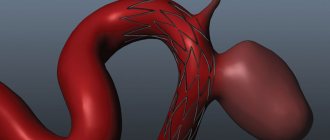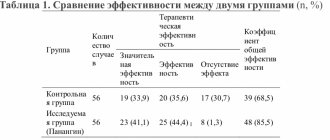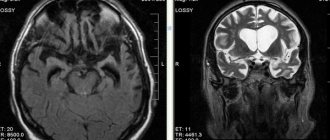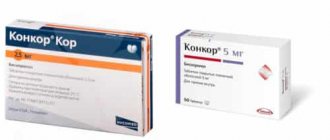Heparin gel I 1000IU/g 30g No. 1
Name
Heparin gel 1000IU/1g 30g
Description
The gel is colorless to light yellow with a specific odor.
Main active ingredient
Heparin sodium
Release form
Gel
Dosage
1000IU/1g
pharmachologic effect
Pharmacological studies show that when applied externally, Heparin gel has a pronounced antiexudative, antiedematous, antigranulomatous, anti-inflammatory and anticoagulant effect.
Indications for use
- symptomatic treatment and reduction of swelling and bruising after blunt trauma (for example, after a bruise); — symptomatic treatment of diseases of the superficial veins (varicose veins, phlebitis, periphlebitis, thrombophlebitis), varicose ulcers, varicophlebitis, conditions after removal of the great saphenous vein of the thigh as part of complex therapy.
Directions for use and doses
1-3 times a day, apply 3-10 cm of gel to the affected area of the skin and rub in gently. Due to limited experience with the drug in children and because there is insufficient research data, this drug should not be used in the treatment of children.
Use during pregnancy and lactation
Use during pregnancy is possible only if indicated under medical supervision. Can be used during lactation according to indications.
Impact on the ability to drive vehicles and other potentially dangerous mechanisms
The drug does not affect the ability to drive vehicles and potentially dangerous machinery.
Precautionary measures
If there are signs of bleeding, the possibility of using Heparin gel should be carefully considered. Heparin gel should not be used for bleeding, applied to open wound surfaces, weeping eczema or mucous membranes, as well as to infected areas in the presence of purulent processes. The penetration of heparin into healthy skin has been described in the case of topical application; Therefore, if thromboembolic complications are suspected, a platelet count should be checked to differentiate heparin-induced thrombocytopenia type II. Therefore, regular platelet count checks in patients with a history of thromboembolic complications are necessary whenever heparin is used (before starting heparin, on the first day after starting use, and then regularly every 3-4 days during treatment until the end of treatment). Heparin gel contains methyl parahydroxybenzoate and propyl parahydroxybenzoate as excipients, so it cannot be used in patients with allergies to parabens.
Use in pediatrics
Due to limited experience with the drug in children and because there is insufficient research data, the gel should not be used in the treatment of children.
Interaction with other drugs
The anticoagulant effect of heparin is enhanced by the simultaneous use of anticoagulants, antiplatelet agents and non-steroidal anti-inflammatory drugs. Ergot alkaloids, thyroxine, tetracycline, antihistamines and nicotine reduce the effect of heparin.
Contraindications
- known hypersensitivity to heparin or any component of the drug; - history of heparin-induced thrombocytopenia type II (immune-mediated HIT type II).
Compound
per tube: active substance - heparin (in the form of sodium heparin) - 1000 IU/g; excipients - carbopol 980 NF, levomenthol, methyl parahydroxybenzoate (E-218), propyl parahydroxybenzoate (E-216), rectified ethyl alcohol from food raw materials, triethanolamine, purified water.
Overdose
Due to low systemic absorption, overdose is unlikely. To date, the phenomena of overdose when using Heparin gel have not been described. With prolonged use on large surfaces, hemorrhagic complications are possible. Treatment: drug withdrawal. If necessary, use a heparin antagonist - protamine sulfate (1% solution).
Side effect
Allergic reactions to heparin after applying the drug to the skin are very rare. However, in some cases, hypersensitivity reactions may occur, such as skin redness and itching, which quickly disappear after stopping use of the drug. Incidence of heparin-induced antibody-mediated thrombocytopenia type II (platelet count
Storage conditions
Store at a temperature not exceeding 25°C. Keep out of the reach of children.
Buy Heparin gel d/nar.approx. 1000IU/g in tubes 30g in pack No. 1 in the pharmacy
Price for Heparin gel d/nar.approx. 1000IU/g in tubes 30g in pack No. 1
Instructions for use for Heparin gel d/nar. approx. 1000 IU/g in tubes 30 g in pack No. 1
Today, psoriasis is considered one of the most common chronic dermatoses. According to various sources [1], this disease affects from 0.2 to 8% of the world's population.
The onset of the disease varies among different patients. Provoking factors may be skin trauma, stress, the use of certain medications, alcohol abuse, infectious diseases (especially those caused by streptococcus and viruses), etc. [2, 3].
Men and women suffer from psoriasis equally often, but in girls, as a rule, psoriasis occurs at an earlier age: thus, the first signs of the disease appear in girls at the age of 16-20 years, and in men - at 18-32 years [4]. The high probability of manifestation of the psoriatic process remains at the age of 40 to 50 years [5]. The urban population gets sick much more often than the rural population, which is apparently due to an unfavorable environmental situation, an accelerated pace of life, various stressful situations and other negative psycho-emotional factors [6]. More often, at the beginning of the disease, there are few rashes; they are characterized by a monomorphic rash in the form of papular elements with a diameter of 1-3 mm to 2-3 cm or more, pink in color, covered with silver-white scales. As a rule, at this stage, the severity and prevalence of the psoriatic process is assessed as mild (PASI≤10). Efflorescence can persist for a long time in the same places, especially on the scalp and in the area of large joints. At this stage, as a rule, treatment of psoriasis does not cause great difficulties, and it is quite enough for the patient to prescribe an appropriate diet, carry out restorative measures and external therapy [7].
For mild psoriasis, emollients and moisturizers are most often used, combining them with other active local agents. Keratolytic drugs reduce the severity of hyperkeratosis and soften psoriatic scales, which in turn facilitates their removal. Like emollients, keratolytic agents are also usually combined with other drugs. Various dosage forms of glucocorticosteroids (GCS) are most often used to treat psoriasis, but their systemic absorption leads to a number of serious side effects.
The use of retinoids for 12 weeks shows good clinical efficacy, and it can be increased when used together with GCS.
During the development of the disease, with an increase in the number of elements and their peripheral growth, the papules merge and form plaques of various sizes and shapes. At this moment, psoriatic lesions are characterized by a high degree of prevalence, severity of erythema and infiltration, which aggravates the patient’s condition. As a rule, the severity and extent of the psoriatic process (PASI) is assessed as moderate (10≤PASI≤30) or severe (30≤PASI≤72). The favorite localization of psoriasis is the extensor surfaces of the extremities, especially in the area of the elbow and knee joints. The rash may affect the skin of the torso; The scalp is often affected.
Treatment of psoriasis is a complex therapeutic task [8]. In accordance with the pathogenetic processes, therapy for psoriasis is aimed at eliminating inflammation, suppressing the proliferation of epithelial cells, and normalizing their differentiation. In many cases, therapeutic measures can be successful, since there are a number of therapeutic methods for this dermatosis, but, unfortunately, all these measures provide only a temporary effect [9]. Pharmacotherapy and phototherapy can clear the affected skin and relieve unpleasant symptoms, but remission is usually short-lived and most patients experience a recurrence of the disease within a year.
For the treatment of moderate and severe psoriatic process, systemic therapy is prescribed: phototherapy, the use of vitamin A analogues and various options for immunosuppression.
Phototherapy blocks DNA replication, reducing skin cell proliferation; This method is quite effective, but is associated with a risk of developing skin cancer, which is why it is prescribed to patients over 50 years of age with intensely disabling psoriasis.
Vitamin A analogues are mainly prescribed for the treatment of severe and rare forms of psoriasis. These drugs have anti-inflammatory properties that reduce skin cell proliferation. However, their use is also associated with severe adverse events, including liver damage and embryonic defects.
Psoriasis is a multifactorial disease. Undoubtedly, changes in the immune system, either genetically determined or acquired under the influence of external and internal factors, play a large role in its pathogenesis.
Immune system disorders are detected both at the cellular and humoral levels and consist in the activation of immunological reactions, accompanied by changes in the content of immunoglobulins of the main classes, circulating immune complexes, the pool of lymphocytes in the peripheral blood, B and T populations and subpopulations of lymphocytes, cells killers, phagocytic activity of segmented leukocytes. To normalize these processes, various drugs belonging to the group of immunosuppressants are used.
Methotrexate is an analogue of folic acid, an inhibitor of DNA synthesis and has the ability to stop cell division. Methotrexate is usually prescribed to treat very severe forms of psoriasis that cannot be treated with other drugs, but its use is associated with the suppression of all dividing germs and is associated with liver damage.
Immunosuppressants such as cyclosporine have a selective effect on T cells. Cyclosporine is commonly used in the treatment of severe scaly psoriasis, but its use is limited to the treatment of patients with resistant psoriasis due to adverse effects such as renal failure, paresthesia and hirsutism.
In recent years, genetically engineered drugs—monoclonal antibodies (MAbs)—have become widely used for the treatment of psoriasis. The names of drugs created on the basis of MAT reflect their structure and basic properties. Thus, drugs with the ending “-cept” block cytokines and, accordingly, prevent cell cooperation; drugs with the ending “-ximab” contain animal mAbs and, by binding to tumor necrosis factor α, block it; with the ending “-mumab” - only human (humanized) MAbs with a similar mechanism of action.
MAT in the treatment of psoriasis is characterized by high efficiency. Due to the manifestation of anticytokine activity, they act specifically on the links of the pathological process, as a result, the quality of life of patients is noticeably improved, and a long period of remission of this disease is achieved [10].
The prescription of such drugs, despite their high clinical effectiveness, is associated with a number of contraindications and the appearance of undesirable reactions in the form of nausea, headache, and decreased blood pressure. Cases of the development of certain autoimmune diseases, as well as exacerbation of infectious processes against the background of their long-term use, have been described. Today, the prescription of MAT remains a therapy for the “select”, since the widespread use of these drugs is hampered by their significant exchange cost [11].
The high clinical effectiveness of drugs that can influence the immunological mechanisms of psoriasis development is not in doubt today, but the problem of developing new immunotropic drugs remains urgent, the use of which, along with high efficiency, will be characterized by a low level of adverse events and availability for widespread use in everyday medical practice .
The modern development of the Russian pharmaceutical industry within the framework of the development strategy of the pharmaceutical industry of the Russian Federation (RF) for the period until 2021 has made it possible to bring to the market a number of high-tech domestic pharmacological drugs characterized by a high profile of effectiveness and safety. It should be noted their low cost, which can significantly reduce the exchange rate of treatment compared to foreign drugs.
The result of many years of hard work was the first representative of a new generation of synthetic peptide immunosuppressants - Timodepressin
.
Timodepressin
was developed by a team of researchers at Pharma Bio LLC in collaboration with the Medical Radiological Research Center of the Russian Academy of Medical Sciences (Obninsk) and the Institute of Immunology of the Ministry of Health of the Russian Federation (Moscow).
The drug was approved by the Pharmaceutical Committee of the Ministry of Health of the Russian Federation for medical use in 2000 (registration certificate number: P No. 000022/01-2000; P No. 000022/02-2000; P No. 000022/03-2000; P No. 000022/04-2000) . Thydepressin
is a synthetic dipeptide consisting of D-amino acid residues of glutamic acid and tryptophan.
Timodepressin
(γ-D-glutamyl-D-tryptophan disodium salt) is an individual chemical compound of peptide nature, obtained by chemical synthesis as a result of structural and functional studies of biologically active low-molecular peptides. The drug is available in the form of a 0.1% solution for injection in 1 ml ampoules (5 ampoules per package), as well as in the form of a nasal spray in 5 ml (0.5 mg) bottles.
Consisting of unnatural D-amino acids connected by a γ-peptide bond, Thymodepressin
is a new class of synthetic peptide drugs that selectively block the proliferation of immune precursor cells.
The specific properties of the drug Timodepressin
make it possible to selectively suppress the functional activity of immunocompetent cells, inhibit the development of autoimmune processes without affecting the cells of other organs and tissues, while minimizing the risk of side effects.
Thydepressin
can be used both as monotherapy and in complex treatment of patients with various diseases. The drug is approved for the treatment and prevention of autoimmune diseases of various origins: autoimmune primary and secondary cytopenias, hypoplastic anemia, rheumatoid arthritis, psoriasis; as a cytoprotective therapy to protect and preserve stem cells, to prevent granulocytopenia, during cytostatic chemotherapeutic effects.
Timodepressin is administered
intramuscularly and intranasally. At the initial stage of treatment, the drug is prescribed systemically; The course of treatment and dosage regimens are selected individually depending on the dynamics of clinical manifestations. A single dose is 1 ml of a 0.1% solution, the maximum single dose is 2 ml of a 0.1% solution. The drug is administered once daily.
Timodepressin
used in adults and children from the age of two, used both in monotherapy and in complex treatment and prevention of psoriasis: the drug is administered intramuscularly at 1-2 ml of solution daily for 7-10 days, then a break for 2 days, then the cycle is repeated. Depending on the clinical situation, 3 to 5 cycles can be performed.
Intranasal Timodepressin
prescribed primarily as maintenance therapy and for the prevention of relapses, as well as in the treatment of children. The drug is administered 1-2 doses (0.5 mg) of nasal spray into each nasal passage daily for 7-10 days, the course of treatment can be continued after a 2-day break.
For patients with generalized psoriatic erythroderma Timodepressin
2 ml of solution is administered intramuscularly daily for 14 days, then intranasally with the simultaneous addition of GCS in medium doses.
Comparative analysis of the results within the departments supervised by the teaching staff of the Department of Dermatovenereology of the Pediatric Faculty of the State Budgetary Institution of Higher Professional Education of the Russian Research Medical University named after. N.I. Pirogov, in the period from 2000 to 2013 demonstrated high clinical effectiveness of the inclusion of the drug Timodepressin
in treatment regimens for patients with psoriasis.
Moreover, the severity of the therapeutic effect of the drug Timodepressin
was not determined by the characteristics of the clinical variant of psoriasis - favorable results after treatment were observed with approximately the same frequency in various forms of psoriasis, which led to a significant improvement in the quality of life of patients.
In some cases, in terms of the strength of the therapeutic response and the dynamics of regression of the psoriatic process, Timodepressin
was superior to routine methods of treating psoriasis.
The use of the drug Timodepressin
was not accompanied by the development of side effects inherent in known immunosuppressants; In addition, it is convenient to use both in hospital and outpatient practice.
Chronic cystitis: new in diagnosis and treatment
If the diagnosis of chronic bacterial cystitis in most cases does not cause difficulties, then treatment is not always effective, and the prognosis is not always favorable, since in some cases it is not possible to identify and then eliminate the cause of the disease. Treatment of chronic cystitis requires a doctor to have a broad outlook, knowledge of the problems of gynecology, neurology, and immunology. During the development of the disease, structural changes are ahead of clinical manifestations, and, conversely, during the recovery process, normalization of impaired functions occurs before the restoration of damaged structures, i.e., morphological manifestations are delayed compared to clinical ones [16]. Only mature epithelial cells are resistant to bacteria, while the barrier function of the epithelium in the presence of epithelial cells with a moderately differentiated ultrastructure is impaired. For the treatment and prevention of chronic recurrent lower urinary tract infections, etiotropic antibacterial therapy is used in 7–10-day courses. Research by Vozianova A.F., Romanenko A.M. et al. (1994) showed that complete restoration of mature surface epithelial cells of the bladder after their damage lasts at least 3 weeks [26]. Thus, in the absence of vigilance on the part of the attending physician and lack of due attention to the duration of pathogenetic treatment, another relapse may be layered on the reparative phase of the previous process. This in turn leads to increased collagen formation, discorrelation and sclerosis of subepithelial structures, which play a major role in the homeostasis of the bladder mucosa and its innervation [27]. Thus, a vicious circle arises: inadequate treatment - chronic inflammation - reactive changes and scarring of submucosal structures - tissue hypoxia - incomplete regeneration of the epithelium - another exacerbation of the process.
Treatment of chronic recurrent cystitis:
- Etiological: antibacterial therapy.
- Pathogenetic - correction of anatomical disorders, correction of immune disorders, improvement of microcirculation, treatment of STIs, correction of hormonal disorders, treatment of inflammatory and dysbiotic gynecological diseases, correction of hygienic and sexual factors, local treatment.
- Preventive - herbal diuretics, antibacterial therapy (including postcoital prophylaxis).
Etiological treatment is antibacterial therapy based on the following principles: duration (up to 7–10 days); choice of drug taking into account the isolated pathogen and antibiogram; prescribing antibiotics with bactericidal action. The drugs to which the largest percentage of sensitive strains of urinary infection pathogens have been isolated in Russia are: fosfomycin - 98.6%, mecillinam - 95.4%; nitrofurantoin - 94.8% and ciprofloxacin - 92.3% [28]. The most preferred are norfloxacin, ciprofloxacin, pefloxacin and levofloxacin due to the absence of unwanted adverse reactions.
The choice of antibacterial drug should be made on the basis of microbiological research data. If for acute uncomplicated cystitis, preference should be given to short courses of antibacterial therapy (3–5 days), then for chronic recurrent cystitis, the duration of antibacterial therapy should be at least 7–10 days for complete eradication of the pathogen, which in chronic cystitis can be localized in submucosal structures bladder walls [1, 5].
Antibacterial therapy. The drugs of choice are fluoroquinolones (ciprofloxacin, ofloxacin, norfloxacin, levofloxacin, lomefloxacin), which have very high activity against E. coli and other gram-negative pathogens of uroinfections. Non-fluorinated quinolones - nalidixic, pipemidic, oxolinic acids have lost their leading importance due to the high resistance of microflora to them, and cannot be the drugs of choice for recurrent urinary tract infections [18, 29].
The choice of fluoroquinolones is due to a wide spectrum of antibacterial activity, pharmacokinetics and pharmacodynamics, and the creation of high concentrations in the blood, urine and tissues. The bioavailability of fluoroquinolones does not depend on food intake; they have a long half-life, which allows taking the drugs 1–2 times a day. They are distinguished by good tolerability and the possibility of use in renal failure. For norfloxacin, the half-life is 3–4 hours; for the treatment of exacerbation of cystitis, it is recommended to take 400 mg 2 times a day for 7–10 days. Ciprofloxacin is considered the most powerful antibiotic from the group of fluoroquinolones, since, providing a bactericidal effect in small concentrations, it has a wide spectrum of antibacterial activity and is quickly distributed and accumulates in tissues and biological fluids with high intracellular concentrations in phagocytes (take 500 mg 2 times a day). Currently, drugs have been created that provide ease of administration - once a day. An example would be Ificipro® OD, which is a new sustained-release formulation of ciprofloxacin.
When an STI is detected, a course of antibacterial therapy is required with the inclusion of macrolides, tetracyclines, fluoroquinolones, aimed at eradicating the pathogen, followed by monitoring of the microflora.
Pathogenetic treatment begins with recommendations for maintaining a work-rest regime and prescribing appropriate nutrition. Drink plenty of fluids. Increased diuresis helps flush out bacteria and other pathological impurities. Dysuric phenomena are reduced due to the action of concentrated urine on the mucous membrane of the bladder. Food should be complete in protein and vitamin content and promote intestinal motility. Currently, pathogenetically based algorithms for conservative treatment of inflammatory diseases of the lower urinary tract have been developed [18].
The availability of modern antibiotics and chemotherapy drugs makes it possible to quickly and effectively treat recurrent urinary tract infections and prevent their occurrence. The unreasonableness and irrationality of antibacterial therapy are factors leading to chronicity of the process and disturbances of immunoregulatory mechanisms with the development of immunodeficiency states. It is important that the immunodeficiency state may not have clinical manifestations [30]. The concept of “immunodeficiency” includes conditions in which there is an absence or decrease in the level of one or more immune factors. Studies conducted in our clinic have shown that patients with chronic cystitis have deviations in the immune status in the form of an increase or decrease in indicators from the average norm in 33.3%. An alternative to prescribing antibacterial drugs is to stimulate the patient’s immune mechanisms when prescribing immunotherapeutic drugs. One such preparation is a lyophilized protein extract obtained by fractionating an alkaline hydrolyzate of certain strains of E. coli. The drug is available in capsules and has the trade name Uro-Vaxom. Stimulation of nonspecific immune defense mechanisms by Uro-Vaxom is an acceptable alternative to low-dose long-term chemoprophylaxis of urinary tract infections [31].
The use of polyvalent bacteriophages in the treatment of chronic recurrent cystitis is noteworthy, which is especially important for patients with a polyvalent allergy to antibacterial drugs or the presence of multidrug-resistant pathogens. Despite the lack of placebo-controlled studies of the use of pyobacteriophages, the clinical effectiveness of these drugs is beyond doubt [18].
The most important element in the pathogenetic therapy of cystitis, which can prevent chronic inflammation, is immunomodulatory therapy. Regulators of immune reactions are cytokines, their main component being interferons (INFs). The functions of INF in the body are varied, but the most important function of INF is antiviral. In addition, INF are also involved in antimicrobial protection and have antiproliferative and immunomodulatory properties. INF are capable of modulating the activity of other cells, such as normal killer cells, increasing the lysis of target cells, the production of immunoglobulins, the phagocytic activity of macrophages and their cooperative interaction with T and B lymphocytes. Gamma-INF inhibits the growth of tumor cells and suppresses the intracellular proliferation of bacteria and protozoa [9, 30]. There are drugs containing exogenous INF. However, INF inducers have advantages over them because they are devoid of antigenic properties, their synthesis in the body is always strictly balanced and, thus, the body is protected from oversaturation with interferons [32]. For the first time, for the complex treatment of chronic recurrent cystitis, we used tilorone, the trade name of the drug “Lavomax®” (125 mg tablets). Taking the drug "Lavomax®" made it possible to achieve remission of the disease in 90%, eradication of microflora in the urine was achieved in 66.7%. The results of our studies showed the undoubted promise of using Lavomax® not only for the treatment, but also for the prevention of chronic cystitis.
The chronic process, taking into account the concomitant pathology of the patients, requires the mandatory use of drugs to combat tissue hypoxia - antihypoxants (Solcoseryl 200 mg, 1 tablet 2 times a day, course 14 days); venotonics (Eskuzan 20); antiplatelet agents that improve the “fluidity” of blood through the capillaries. A typical representative of the group of antiplatelet agents is Trental, which has a vasodilator, antiplatelet, angioprotective effect (100 mg 2-3 times a day, for a course of up to 30 days), the active substance is pentoxifylline. Pentoxifylline-Acri is easy to take, as it comes in a tablet form of 100 mg, improves microcirculation and oxygen supply to tissues, mainly in the limbs, central nervous system, and to a lesser extent in the kidneys. There are a lot of drugs that improve arterial and venous circulation. However, today there is a drug that can restore microcirculation and muscle tone of the bladder; its beneficial effect on immunity indicators has been proven. This is Prostatilen, which has proven itself in the treatment of prostate diseases - a complex of polypeptides isolated from the tissues of the prostate gland of cattle [33]. We were interested in the ability of peptides (cytomedines) to act as bioregulators in the body. Their action is presumably carried out through receptors located on the surface of cells. As a result of their introduction into the body, endogenous regulatory peptides are released and the effect of cytomedins is prolonged [34]. The drug “Vitaprost®” (50 mg rectal suppositories), traditionally used in the treatment of pathologies of the male genital area, was first used in the Nizhny Novgorod urology clinic for the treatment of chronic recurrent cystitis in women. By studying capillary blood flow in the bladder mucosa in patients with chronic recurrent cystitis using laser Doppler flowmetry (LDF) [35, 36], we obtained an objectively proven effect from the use of this drug (Fig. 3). In Fig. 3 and monitoring before treatment, microcirculation index (PM) - 4.7 perfusion units. In Fig. 3 b monitoring after treatment (PM - 18.25 perfusion units).
Before treatment, patients had a stagnant type of blood flow with reduced activity of microcirculatory components and tissue ischemia. The biostimulating drug “Vitaprost®”, used as pathogenetic therapy in the treatment of chronic cystitis, contributed to the rapid disappearance of the inflammatory process and stimulation of regenerative processes, which we monitored with CP OCT. The prescribed drug made it possible to achieve a rapid effect of analgesia and helped achieve social adaptation of the patients in a fairly short time.
Treatment of recurrent lower urinary tract infections occurring against the background of STIs, in the presence of dysplastic processes in the posterior urethra, bladder neck area, and bladder triangle should be aimed at eradicating atypical pathogens and restoring the mucin layer of the urothelium. The formation of a mucopolysaccharide layer, which normally covers the epithelium of the bladder, is considered a hormonal-dependent process: estrogens affect its synthesis, progesterone affects its secretion by epithelial cells. The use of female sex hormones intravaginally leads to proliferation of the vaginal epithelium, improved blood supply, restoration of extravasation and elasticity of the vaginal wall, increased glycogen synthesis, restoration of the population of lactobacilli in the vagina, and acidic pH. An example of estrogen for the treatment of urogenital disorders is the drug estriol - Ovestin, available in tablet form 2 mg and in the form of vaginal suppositories of 0.5 mg. When using any form, Ovestin is prescribed once a day.
In the presence of severe pain, nonsteroidal anti-inflammatory drugs are prescribed that suppress the synthesis of prostaglandins and have a pronounced analgesic effect. Indomethacin, diclofenac and others are prescribed. The drugs are used in usual doses for 10–21 days, maintaining dosages for up to 2 months. The effect of nonsteroidal anti-inflammatory drugs usually lasts for 3–4 months after their discontinuation [1].
The prescription of antihistamines and antiserotonin drugs is necessary to eliminate etiological and pathogenetic factors. This could be the drug "Peritol" - an H1-histamine receptor blocker with a pronounced antiserotonin effect. It also stabilizes mast cells and prevents their degranulation with the release of biologically active substances. Its anticholinesterase activity affects the storage function of the bladder. The drug is taken with 2 mg - 1 time per day, gradually increasing the dose to 4 mg - 3 times a day for 3-4 weeks. Zaditen (ketotifen) is prescribed in a dose of 0.5–1 mg, 2 times a day for 2–3 months. Other antihistamines (Diazolin, Tavegil, Claritin) are also prescribed as usual for 1–3 months.









